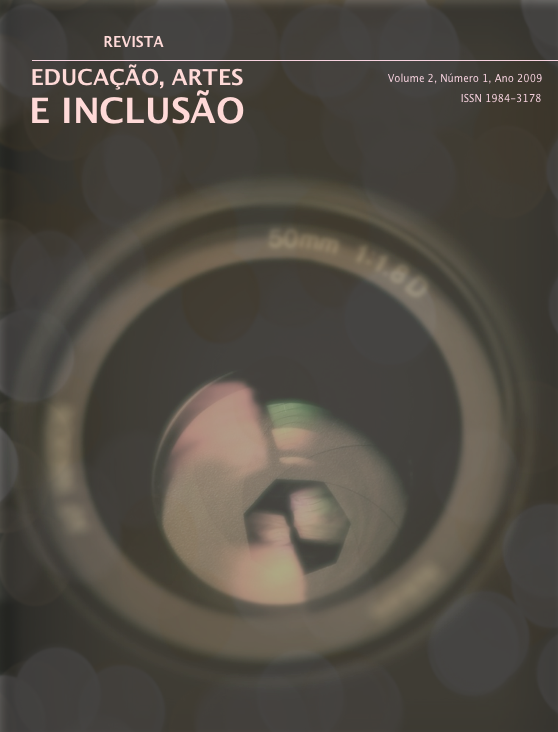OS DIFERENTES DISPOSITIVOS DE FABRICAÇÃO DE IMAGENS E ILUSTRAÇÕES TÁTEIS E AS POSSIBILIDADES DE PRODUÇÃO DE SENTIDO NO CONTEXTO PERCEPTIVO DOS CEGOS
Keywords:
cegos, inclusão, acessibilidadeAbstract
Nas últimas décadas, além do acesso a documentos escritos, têm-se considerado igualmente importante disponibilizar imagens ilustrativas, pedagógicas e artísticas aos cegos. Neste artigo, busco inicialmente apresentar algumas imagens táteis e as principais técnicas de relevo utilizadas. Em seguida proponho analisar, à luz das teorias de semiótica pragmática e cognitiva, as possibilidades de produção de sentido dessas imagens no contexto perceptivo dos cegos. Essa análise buscará abordar o problema da adaptação de conteúdos visuais para cegos se referindo a dois aspectos principais: 1) a compatibilidade/incompatibilidade entre o contexto perceptivo de videntes e o contexto perceptivo dos cegos e 2) a influência da interação sócio-cultural e do contato com signos figurativos para a compreensão do sistema de representação visual.Downloads
Downloads
Published
How to Cite
Issue
Section
License
Copyright Statement
The Educação, Artes e Inclusão is a journal that follows the Free Access Policy. The articles published by the journal are free of charge, intended for educational and non-commercial applications. The articles whose authors are identified represent the expression from the point of view of their authors and not the official position of the Educação, Artes e Inclusão Journal or the Educação, Artes e Inclusão Research Group.
Authors who publish in this journal agree to the following terms:
(A) Authors retain the copyright and grant the journal the right of first publication, with the work simultaneously licensed under the Creative Commons Attribution License which allows the sharing of the work with acknowledgment of authorship and initial publication in this magazine.
(B) Authors are authorized to take additional contracts separately, for non-exclusive distribution of the version of the work published in this journal (eg publish in institutional repository or as a book chapter), with acknowledgment of authorship and initial publication in this magazine.
(C) This journal provides public access to all of its content, as this allows for greater visibility and scope of published articles and reviews. For more information on this approach, visit the Public Knowledge Project.
This journal is licensed under a Creative Commons Attribution-NonCommercial-ShareAlike 4.0 International License. This license allows others to remix, adapt and create from your work for non-commercial purposes, and although new work must give you due credit and cannot be used for business purposes, users do not have to license such derivative works under the same terms.



